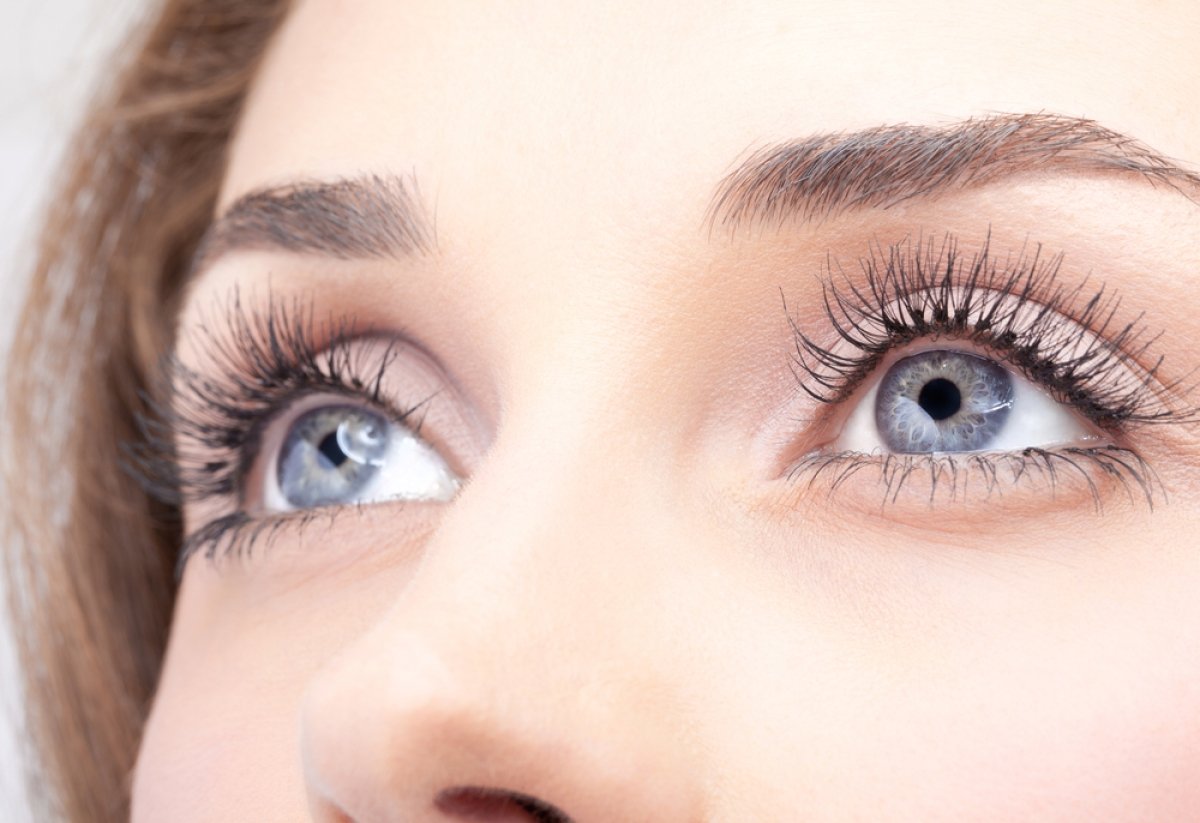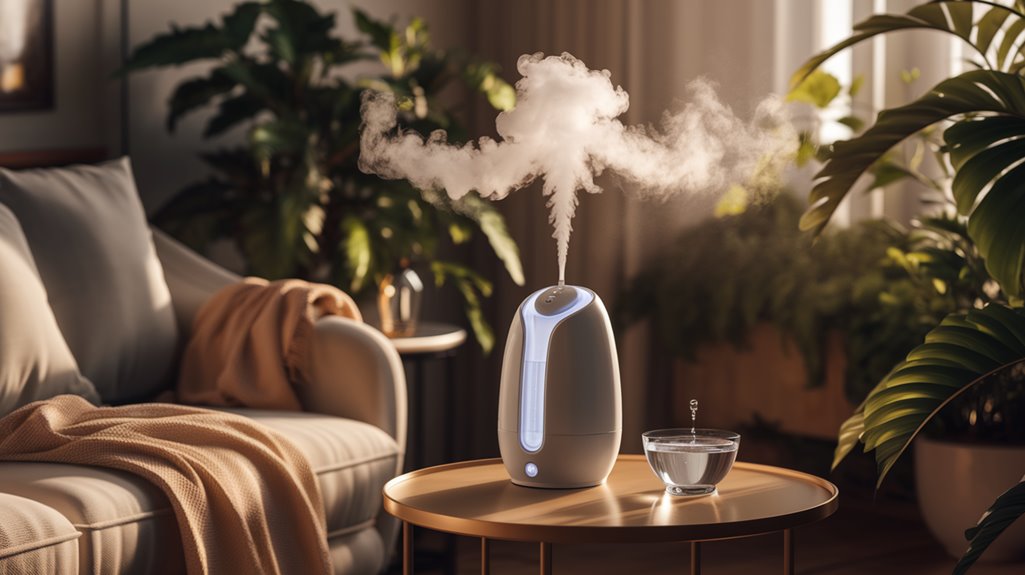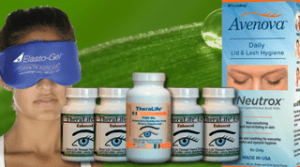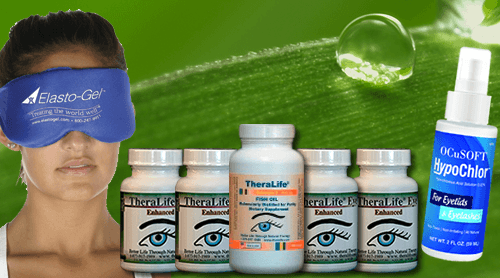To optimize your indoor environment for alleviating dry eyes, it’s crucial to maintain ambient humidity levels between 40% and 60%. Using an ultrasonic or evaporative humidifier is recommended, as these models are most effective for generating a fine mist without heat, reducing tear evaporation. Place the humidifier in essential areas like bedrooms or offices, ensuring it’s compatible with room size and offers quiet operation for added comfort. Regular maintenance, including the use of distilled water and frequent cleaning, prevents bacteria buildup and enhances mist quality. Consistent use of a humidifier helps keep the tear film stable, thereby reducing dryness and irritation.
For those seeking comprehensive solutions to dry eyes and related conditions, TheraLife offers a range of natural products designed to address various eye health issues. From blepharitis treatment to managing dry eyes associated with Sjogren’s syndrome or rosacea, TheraLife’s products provide targeted relief. The company emphasizes using natural ingredients and holistic approaches, ensuring that customers receive effective, gentle care for their eye health needs. Additionally, TheraLife provides resources on managing conditions like uveitis, chalazion, and even eyelash mites, offering a well-rounded approach to maintaining optimal eye health.
Powerful Oral Dry Eye Relief That Works.
Add To Cart
Key Takeaways
- Use a cool-mist or ultrasonic humidifier to add moisture without raising the room temperature.
- Maintain humidity levels between 40% and 60% to reduce tear evaporation and alleviate dry eye symptoms.
- Position the humidifier in bedrooms or offices for targeted eye comfort in dry environments.
- Regularly clean the humidifier and use distilled water to prevent bacteria and mold growth.
- Utilize humidity level controls and sensors to automatically adjust settings for optimal moisture.
Benefits of Humidifiers
When considering ways to alleviate dry eyes, understanding the benefits of humidifiers is vital.
Humidifier advantages include reducing tear evaporation by increasing ambient moisture, which enhances moisture retention in the tear film. This stability is important for preventing dryness and irritation, thereby reducing the risk of infections and long-term corneal damage. Chronic dry eyes are linked to more serious complications such as blepharitis, which can exacerbate discomfort and inflammation.
Clinical studies indicate that maintaining relative humidity between 40% and 60% considerably improves tear film parameters and ocular comfort. Not all individuals experience relief, as effectiveness can vary between users.
You’ll also find that using a humidifier supports productivity by maintaining comfortable work environments, reducing the impact of dry air on your eyes.
Additionally, humidifiers help preserve moisture levels overnight, preventing nighttime dry eye symptoms.
As a result, integrating a humidifier into your daily routine offers considerable relief for dry eye syndrome.
Choosing the Right Humidifier
When selecting a humidifier for dry eyes, focus on types that produce a fine mist, such as evaporative or ultrasonic models, to efficiently alleviate symptoms. Consider key features like humidity level control and water filters to maintain an ideal environment and prevent microbial growth. Additionally, make sure the device is suitable for the room size and offers a quiet operation to enhance comfort, especially during sleep. Maintaining an optimal humidity level of 40-60% can significantly improve hydration and reduce eye dryness. Lacrimal glands play a crucial role in tear production, and maintaining adequate humidity can support their function in preventing dry eyes.
Key Features to Consider
Selecting the right humidifier for dry eyes involves evaluating several key features that guarantee ideal comfort and air quality.
Focus on humidity sensors, as they automatically adjust the device based on room humidity levels, maintaining an ideal range of 30-60%. This regulation is critical for consistent eye comfort and preventing dryness. A humidifier can be particularly beneficial during the winter months, when indoor heating tends to dry out the air and exacerbate dry eye symptoms. Regular exercise can enhance circulation, which is beneficial alongside the use of humidifiers for overall eye health.
Additionally, prioritize water quality by choosing models that use distilled or purified water to inhibit germs and mold. Effective water filters, like charcoal-infused foam, help remove impurities, ensuring a clean mist. Regular cleaning of the tank is essential to prevent bacterial growth.
Finally, consider size and portability, ensuring the humidifier suits the intended space, from compact options for travel to larger units for full-room coverage.
Optimal Humidifier Types
After understanding the key features for an effective humidifier, evaluating the types available can further enhance comfort for dry eyes.
Cool-mist humidifiers are favored for their ability to add moisture without raising room temperature, ideal for soothing dry eyes. They provide a safe option around children and pets and are quieter and more energy-efficient than warm-mist models.
Ultrasonic humidifiers, employing mist technology, use vibrations to create a fine mist, making them efficient and nearly silent. These are customizable for different environments, such as bedrooms or offices. It’s important to maintain optimal humidity levels, ranging from 40% to 60%, to significantly alleviate dry eye symptoms. Maintaining bedroom humidity at these levels can aid tear production and reduce dry eye discomfort.
Evaporative humidifiers regulate humidity automatically, preventing over-saturation, and improve air quality by reducing allergens.
Leading humidifier brands offer models across these types, ensuring options that cater to specific needs and preferences.
Humidifier Types for Dry Eyes
When selecting a humidifier for dry eyes, you should consider the benefits of evaporative and ultrasonic models, particularly cool-mist options. Cool-mist humidifiers, especially ultrasonic types, effectively increase air moisture without raising room temperature, making them ideal for alleviating dry eye symptoms. Evidence suggests that maintaining a cooler mist environment reduces ocular surface dryness and minimizes the risk of exacerbating symptoms. Humidifiers are beneficial because they add moisture to the air, which prevents tears from evaporating quickly and provides relief from dry eye discomfort. For those suffering from dry eyes, prolonged screen time can worsen the condition, making the use of a humidifier even more beneficial in maintaining moisture and comfort.
Evaporative vs. Ultrasonic
While considering humidifiers for alleviating dry eyes, understanding the differences between evaporative and ultrasonic types is vital. In humidifier comparisons, evaporative models utilize a natural humidification process, dispersing moisture through an internal fan without heat. This method controls moisture levels effectively, providing relief without the risk of excessive dryness. Maintenance is straightforward, requiring regular but simple cleaning. Using a humidifier can be particularly beneficial because it helps reduce tear evaporation rate, which is a common issue for those experiencing dry eye syndrome. Conversely, ultrasonic humidifiers employ vibration technology to generate fine droplets, offering quieter operation and lower energy consumption. They’re available in diverse sizes, accommodating various spaces, though they may come at higher costs. Both types benefit from humidity level control, ensuring ideal moisture levels for comfort. Evaluating noise levels, cost, and maintenance needs will guide your choice, with personal preferences playing a significant role in decision-making. For individuals with dry eyes, environmental stressors like air quality and humidity play a significant role in exacerbating symptoms, making humidifiers a valuable tool for symptom relief.
Cool-Mist Benefits
Cool-mist humidifiers offer distinct advantages for individuals experiencing dry eyes. They enhance cool mist comfort by increasing humidity without raising room temperature, essential for alleviating dry eyes. This moisture regulation prevents overheating, a known aggravator of dry eyes. Their energy-efficient operation benefits both cost and environmental considerations, while the lower risk of burns makes them safer around children and pets. These humidifiers can improve air quality by adding moisture and reducing allergens, creating a more comfortable environment. For best use, place them near your bed or workspace to concentrate moisture where it’s most needed. Regular cleaning and using distilled water prevent bacterial growth and mineral buildup. Adjust humidity controls to maintain ideal levels between 40% and 60%, supporting tear film stability and enhancing eye comfort. Additionally, using a humidifier can help reduce the risk of underactive tear production, a root cause of dry eyes, by maintaining an optimal humidity level.
Maintaining Your Humidifier
Proper maintenance of your humidifier is essential to guarantee its ideal performance and longevity. Establish a cleaning schedule to prevent issues like mineral build-up and microbial growth. Regular maintenance reduces health risks associated with humidifiers, ensuring a safer environment. Regularly using a humidifier can aid in alleviating symptoms of dry eyes, similar to how warm compresses provide relief for eye discomfort.
Daily, change the water, use distilled water, and wipe down the exterior. These maintenance tips guarantee the humidifier operates efficiently and safely.
For deep cleaning, use a vinegar solution or a bleach solution to soak parts, scrubbing with a soft-bristled brush if needed. Rinse thoroughly and dry before reassembly to prevent residue.
Always unplug the device before cleaning to avoid hazards. Replace filters per manufacturer instructions.
Before storage, clean and dry the unit, disposing of filters. Store in a dry place, checking for damage before reuse.
Follow the owner’s manual for specific guidance.
Effective Humidifier Usage
Ensuring your humidifier is well-maintained sets the stage for ideal usage in alleviating dry eye symptoms.
Adjusting humidifier settings is essential for maintaining ideal humidity levels between 40-60%, which helps prevent tear evaporation. Choose a cool-mist or ultrasonic humidifier for effective mist output that hydrates your eyes without excessive heat. Dry environments can exacerbate dry eye symptoms by increasing tear evaporation, so using a humidifier can significantly improve eye comfort. People with autoimmune conditions often experience dry eyes, and maintaining proper humidity can ease their discomfort.
Position your humidifier in the bedroom or office to combat dry air from environmental conditions.
Consistent use and placement are key; a tabletop model on your nightstand can deliver targeted hydration.
Regular cleaning and using distilled water further enhance mist quality by preventing bacterial growth and debris.
Additional Eye Care Measures
While humidifiers play an essential role in managing dry eyes, integrating additional eye care measures can greatly enhance symptom relief and ocular health. Implementing proper eye drop techniques is vital; regular use of preservative-free artificial tears or lubricants maintains moisture. Opt for gels and ointments for prolonged effect, especially at night. Tear duct management involves advanced treatments like silicone plugs or thermal cautery to prevent tear drainage, retaining natural lubrication. Daily warm compresses assist in clearing blocked oil glands, while thermal pulsation devices offer mechanical unclogging. Scleral lenses provide a protective barrier, trapping moisture. Regular eyelid washing and avoiding irritants like smoke or dry environments further support eye health. Consulting an eye care specialist guarantees a tailored approach. For those seeking a more comprehensive solution, TheraLife Eye Enhanced offers a unique oral formulation that addresses the root causes of dry eye. Regular use of nonprescription eye drops is recommended even when eyes feel fine for chronic dry eye cases, ensuring consistent lubrication and comfort.
Frequently Asked Questions
Can Humidifiers Cause Any Side Effects for Dry Eye Sufferers?
Yes, using humidifiers can cause side effects for dry eye sufferers.
Potential risks include allergic reactions to mold or dust, especially if you have existing allergies or asthma.
Over-humidification is another concern, as it can lead to mold growth and associated health issues.
While humidifiers improve moisture, they don’t address underlying conditions causing dry eyes.
Regular maintenance and monitoring are essential to minimize these risks and guarantee safe use.
How Often Should I Replace the Water in My Humidifier?
You should replace your humidifier’s water daily to maintain ideal water quality and guarantee effective humidifier maintenance.
This prevents bacterial growth and minimizes mineral buildup, which can affect performance and air quality.
Using distilled or purified water is essential to maintaining water quality and preventing mold.
Regularly clean the tank with mild soap to promote hygiene.
Adhering to these practices enhances humidifier function and promotes healthy air, especially for dry eye relief.
Are There Specific Brands Recommended for Dry Eyes?
Did you know that maintaining indoor humidity between 40-60% can greatly improve eye health?
When choosing humidifier brands, consider TaoTronics for its quiet operation and Bizoe, designed specifically for dry eyes.
Pure Enrichment offers a filterless design, while Elechomes handles larger spaces.
Canopy’s evaporative models guarantee clean mist with UV treatment.
Each brand helps reduce tear evaporation, promoting better eye health in dry environments.
Choose wisely for best results.
What Is the Cost Range for Effective Humidifiers?
When considering the cost range for effective humidifiers, you’ll find affordable options like spray-mist humidifiers, typically $100-$150, which can be DIY installed.
For high-end models, steam humidifiers range from $300 to $1,300, with installation adding $500-$2,200.
Generally, total installed costs span $400 to $2,200.
These units, whether budget-friendly or luxurious, maintain ideal humidity levels, essential for reducing dry eye symptoms.
Choose based on your budget and technical needs.
How Does Humidity Affect Contact Lens Wearers?
Ah, humidity levels, the great puppeteer of your eye comfort!
In high humidity, your soft lenses might turn into tiny sponges, causing blurred vision.
Meanwhile, low humidity transforms them into rigid discs, reducing oxygen flow and welcoming irritation.
Evidence shows maintaining ideal moisture is key.
Blink often, use rewetting drops, and consider a humidifier to keep your eyes and lenses in harmony, because desert eyes aren’t the latest trend.
Conclusion
Using a humidifier can significantly reduce dry eye symptoms by maintaining optimal indoor humidity levels. Choose a unit that suits your space, such as an ultrasonic humidifier for quiet operation, and ensure regular cleaning to prevent bacterial growth. In addition to a humidifier, TheraLife offers products that can further alleviate dry eye and related conditions. Their all-natural supplements and treatments provide an effective solution for managing blepharitis, Sjogren’s syndrome, and uveitis, among other eye health issues. TheraLife’s comprehensive approach combines eye care products and dietary recommendations to enhance comfort and promote overall eye health. For instance, their products are designed to improve tear production and reduce inflammation, offering a holistic treatment path for those suffering from dry eyes.





